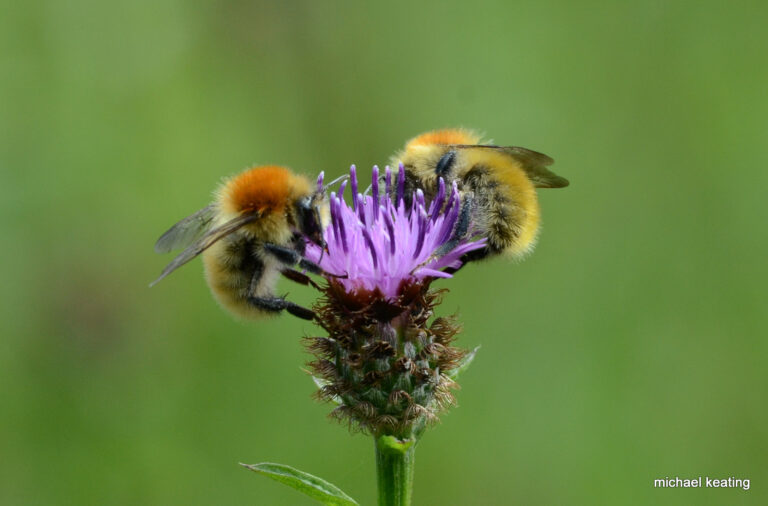A new booklet ‘Gardening for Biodiversity’ has been launched to help turn our gardens, big or small, into a haven for wildlife. With an estimated 2 million gardens in this country, action by just some of us could make a huge difference to our native wildlife. ‘Gardening for Biodiversity’ is the creation of wildlife author Juanita Browne. With lovely step-by-step drawings by illustrator Barry Reynolds, the booklet offers lots of ideas and practical projects to help us improve the conditions for biodiversity in our gardens.
Rosaleen Dwyer, Heritage Officer with South Dublin County Council said “Gardens can be an oasis for wildlife, especially if we make space for nature. At a time when we are making more use than ever of our gardens and parks, we are appreciating the birds, bees and insects around us. We hope that this little guide will help anyone, from the complete beginner to the more experienced gardener, to improve their gardens for nature and for themselves.’’
Many of the steps that can be taken are really easy, like leaving an “untidy” corner of your back garden for nature, leaving roadside verges to grow naturally, or allowing some of the gold-star pollinator-friendly plants to grow and flower e.g. – clovers, dandelions, birds-foot trefoil, willow, bramble, and ivy. One small spot for wildlife in your garden can make a huge difference.
Author of the guide, Juanita Browne said “I hope that this simple guide will help all of us create gardens that are more wildlife-friendly. This doesn’t mean letting your garden go wild, but simply doing things a little differently. For instance, when buying plants, choose plants that are especially attractive to insects. Or you could create a wildflower strip around your lawn where wildflowers are allowed to grow. These small changes can bring huge benefits for biodiversity”.
For the more adventurous, the book contains step-by-step guidance on how to build a bird bath, create a log pile for hedgehogs and mini beasts, and how to install a pond or bog garden. But it won’t just benefit biodiversity. There is increasing evidence that time spent in nature is good for our own mental health and well-being too. As more of us spend time closer to home, regular contact with nature has become ever more important. A 2016 World Health Organisation review found that urban green spaces, such as parks, playgrounds, and gardens, can promote mental and physical health, and reduce morbidity and mortality in urban residents. These places offer psychological relaxation and stress alleviation. They stimulate social cohesion and support physical activity, while reducing exposure to air pollutants, noise and excessive heat.
“Gardening for Biodiversity” was produced by Local Authority Heritage Officers around the country, with help from the Heritage Council and the National Parks and Wildlife Service of the Department of Culture Heritage and the Gaeltacht, as part of an initiative to encourage projects under the National Biodiversity Action Plan, “Gardening for Biodiversity” is available to download for free at https://bit.ly/2TDDGPB


